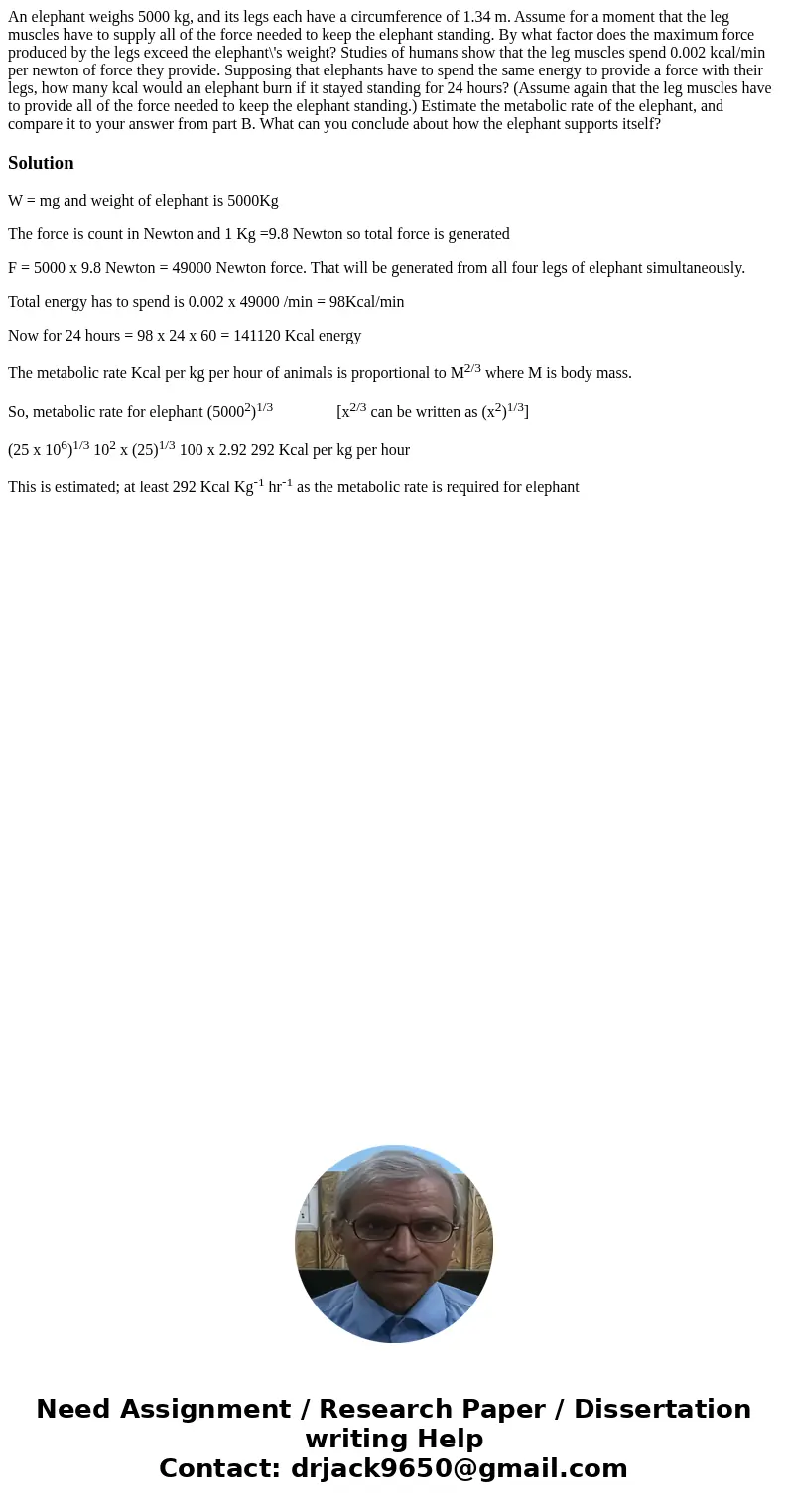An elephant weighs 5000 kg and its legs each have a circumfe
An elephant weighs 5000 kg, and its legs each have a circumference of 1.34 m. Assume for a moment that the leg muscles have to supply all of the force needed to keep the elephant standing. By what factor does the maximum force produced by the legs exceed the elephant\'s weight? Studies of humans show that the leg muscles spend 0.002 kcal/min per newton of force they provide. Supposing that elephants have to spend the same energy to provide a force with their legs, how many kcal would an elephant burn if it stayed standing for 24 hours? (Assume again that the leg muscles have to provide all of the force needed to keep the elephant standing.) Estimate the metabolic rate of the elephant, and compare it to your answer from part B. What can you conclude about how the elephant supports itself? 
Solution
W = mg and weight of elephant is 5000Kg
The force is count in Newton and 1 Kg =9.8 Newton so total force is generated
F = 5000 x 9.8 Newton = 49000 Newton force. That will be generated from all four legs of elephant simultaneously.
Total energy has to spend is 0.002 x 49000 /min = 98Kcal/min
Now for 24 hours = 98 x 24 x 60 = 141120 Kcal energy
The metabolic rate Kcal per kg per hour of animals is proportional to M2/3 where M is body mass.
So, metabolic rate for elephant (50002)1/3 [x2/3 can be written as (x2)1/3]
(25 x 106)1/3 102 x (25)1/3 100 x 2.92 292 Kcal per kg per hour
This is estimated; at least 292 Kcal Kg-1 hr-1 as the metabolic rate is required for elephant

 Homework Sourse
Homework Sourse